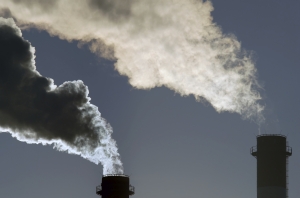MELBOURNE, March 19, 2018 – New modelling by energy market analysts, RepuTex, indicates that the government’s emissions reduction target for the electricity sector will be met under a ‘do nothing’ scenario – without the proposed National Energy Guarantee (NEG) – with investment under state renewable energy policy set to drive emissions reductions that exceed the government’s target.
RepuTex modelling – undertaken ahead of the upcoming Council of Australian Governments (COAG) energy council meeting – analyses investment and emissions reductions in the NEM under a ‘current policy projection’, reflecting a ‘do nothing’ scenario, prior to the implementation of the NEG.
The modelling differs from earlier analysis commissioned by the Energy Security Board (ESB) – which excluded future investment under state renewable energy targets (S-RETs) – with RepuTex instead assuming current targets in Queensland and Victoria are maintained, in line with assurances from state policymakers.
Modelling for the ESB estimated that 8-9 GW of renewable capacity would be added to the NEM by 2030 – driven by the current large-scale renewable energy target (LRET), the Snowy 2.0 scheme, and initial renewable energy auctions in Queensland and Victoria (2018). Further investment to meet the Queensland and Victoria renewable energy targets was assumed not to occur.
Accounting for state targets, RepuTex estimates that a further 8 GW of investment in renewable energy is likely to come online through to 2030 under a ‘do nothing’ scenario, taking renewable capacity to 16 GW by 2030 – double levels modelled by the ESB.
According to RepuTex, ‘business-as-usual’ electricity sector emissions will therefore be far lower than forecast by the ESB, with the analysts expecting the sector to eclipse its 26 per cent emissions target even without the implementation of the NEG.
“Modelling provided to the ESB estimated electricity emissions would fall to 19 per cent below 2005 levels by 2030, prior to the NEG being implemented. However, by excluding state targets this underestimates expected renewable investment under a ‘do nothing’ scenario, said Bret Harper, associate director of research at RepuTex.
“Accounting for renewable energy investment in Queensland and Victoria to meet targets in those states, we see business-as-usual emissions falling a further 10 per cent – to be 29 per cent below 2005 levels over the same period”.
“This means that the emissions target for the electricity sector will be met under a ‘do nothing’ scenario – without the National Energy Guarantee”, he said.
According to RepuTex, this raises questions over the ambition of the NEG framework, with a ‘do nothing’ scenario already projected to exceed the government’s emissions target, rendering the new policy immaterial to the market.
“As currently designed, modelling indicates the NEG emissions requirement would have a negligible impact on the market, with current state policy taking us beyond a 26 per cent target by 2030’, said Mr Harper.
“Unless the target is more ambitious than where emissions are projected to be without the NEG, there is little need for the administrative complexity of the scheme”, he said.
Renewable investment unlikely to ‘stagnate’ after 2020
While the modelling raises questions over the ambition of the NEG, RepuTex notes that earlier speculation renewable investment would stagnate after 2020 may be exaggerated, with state policy expected to drive continued investment in large-scale wind and solar.
RepuTex projects that current state policy will continue to provide a signal for investment in renewable energy projects, driving growth from around 20 per cent of all generation in 2017, to 41 per cent by 2030 – well above the 32-36 per cent modelled for the ESB.
“The NEG is unlikely to kill off renewable energy investment, largely because the policy itself will not have a material impact on the market” said Mr Harper.
“The favourable economics of renewable energy, combined with contracting to meet state targets, will continue to provide a signal for investment. Even without clean energy credits under the federal RET, we see new projects attracting competitive long-term financing, particularly in states with strong renewable targets”, he said.
According to RepuTex, Queensland and Victoria will attract the most renewable energy investment, at 45 and 32 per cent respectively, with the remainder flowing to New South Wales (15 per cent), South Australia (6 per cent) and Tasmania (2 per cent).
This reflects the strength of current state targets, with New South Wales expected to fall behind its regional neighbours, despite the recent approval of 11 large-scale solar energy projects by the Berejiklian government in the past 12 months.
“The arms race between the states for renewable investment is well underway, with or without the NEG”, said Mr Harper
“If the NEG target is inferior to the business as usual trajectory, we will continue to see state policy provide the dominant signal for new investment in Australia”, said Mr Harper.
MEDIA CONTACTS
RepuTex spokespeople are available for comment. Please contact RepuTex Melbourne on +61 3 9600 0990.










